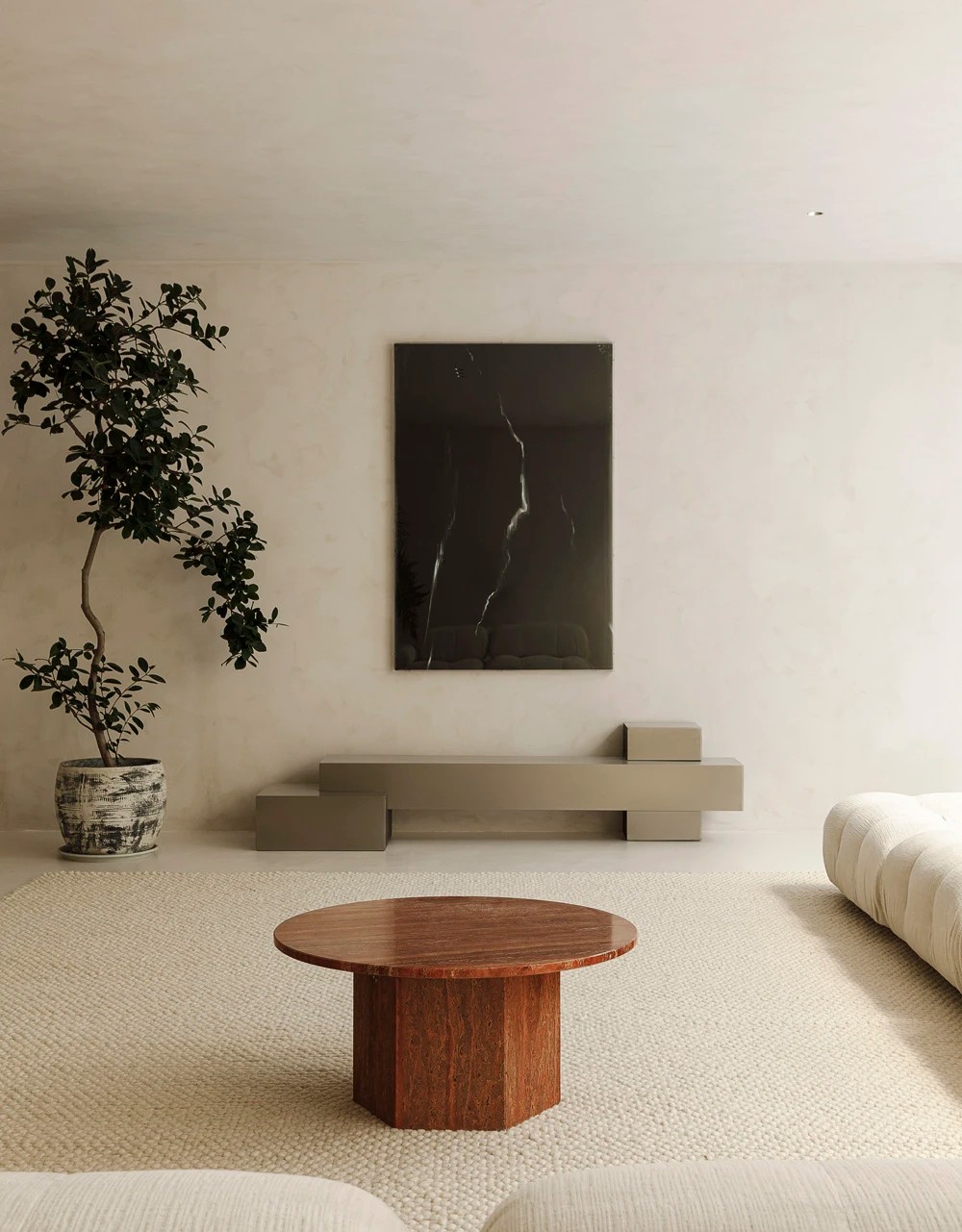BF House OAB + ADI
2012-09-13 00:00
架构师提供的文本描述。这座房子占地3000平方米,高25米,位于一个只有50%建筑的Castellón社区。从地块上我们可以看到,它反映了17世纪的历史,当时人口过剩迫使人们种植各种地形,包括那些非常陡峭的地形,通过一个由当地岩石砌成的墙的小梯田系统,后来的废弃使树木生长,主要是松树和胡桃树。我们对地块的立场是绝对尊重的,所以建造方法也应该尊重土地,因此我们选择了一个实际上不触及土地,又不砍伐树木的预制建筑系统,并利用现有的梯田/花园区,在受损地区重建,采用相同的石头和相同的技术。房屋的一部分-车库和辅助区域-被掩埋,允许我们在自然地形上重新引入天然植被。这也允许地块从一个坡道进入位于13 ML的停车场,并与两层房屋的水平通信。
Text description provided by the architects. This home is on a plot of 3,000sqm with a height of 25m, in a Castellón neighborhood that is only 50% constructed. Looking at the plot, we see that it reflectsits seventeenth century history, which is when overpopulation forced the cultivation of all types of terrain, including those that are very steep, through a system of small terraces with walls made of local rock. The later abandonment allowed the growth of trees, mainly pine and carob. Our position towards the plot was that of absolute respect, so the construction method should also respect the land, thus us opting for a prefabricated building system that is deposited on the land practically without touching it, without cutting down trees, and taking advantage of existing terrace/garden areas, which were rebuilt in the damaged areas, with the same stone and same technique. Part of the house – garage and auxiliary areas – is buried, allowing us to re-introduce native vegetation on the natural terrain. This also allows the plot to be accessedon the upper levelby forklift from a ramp that enters the garage located 13ml under the access level that communicates with both of the home’s levels.
为了减少对地面的影响,我们选择了一个在车间里制造的金属结构,并将其以大块的形式运输到现场,可以组装在3根金属V形柱子上。一个现有的石阶支撑着结构的后部。
All of this is hidden from view. For construction, in trying to lessen the impact on the ground, we chose a metal structure fabricated in a workshop and transported to the site in large pieces that could be assembled on 3 metal, V-shaped pillars. An existing stone terrace supports the back part of the structure.
由于所用的干燥建筑材料,这座房子看上去像是悬浮的或在飞行中。外墙由波纹金属制成,表面由波纹金属制成,由于褶皱所造成的阴影而专门设计以防止眩光和热量。巨大的前洞口朝向壮丽的景色,在冬天允许充足的阳光。太阳能电池板在屋顶上采用热管技术,可以保证几乎在任何时候都有热水供应,供家庭使用和地板下取暖。气流通过露台,利用不同的方向,这允许减少空调消耗,在任何情况下,已经安装。
This home looks as though suspended or in flight due to the dry construction materials used. The façade, resulting in various layers, is finished on the outside with corrugated sheet metal, specially designed to prevent glare and heat, thanks to the shadows caused by the folds. The great front opening is oriented towards magnificent views, and allows adequate sunlight in during the winter, but also protects from the sun in the summer. The solar energy panels with heat pipe technology on the roof allow the home to guarantee that at almost any moment, there will always be hot water available for both domestic use and for under-floor heating. Air currents cross the patio, taking advantage of the different orientations, which permits reductions in air conditioning consumption, which, in any case, has been installed.
中间庭院允许进入房子下面,同时允许所有房间面对阳光和风景。整个房子围绕着这个庭院旋转。这是一个有庭院的房子,但有不同的内涵,因为从庭院的中心位置和周围的景观可以看到房子里的每一个房间,由于庭院四面环绕在房子的四周,但由于地势的倾斜,院子没有被四面包围。在大面积的前区,里面有厨房、客厅和主卧室,建筑系统很明显,因为柱子和屋顶结构可以看到,这些支柱和屋顶结构由金属支架构成,支撑着一张瓦楞纸,上面盖着屋顶。
The intermediate courtyard allows access under the house, and at the same time, allows all the rooms to face the sun and the views. The whole house revolves around this courtyard. This is a house with a courtyard, but with different connotations since each room in the house can be seen from the courtyard’s central location, as well as the surrounding landscape, and since the courtyard is surrounded on four sides by the house, but is not enclosed by it due to the slope of the plot. In the large front area, which houses the kitchen, living room and master bedroom, the construction system is evident since the pillars and roof structure, formed by metal brackets supporting a corrugated sheet over which the roof is built, can be seen.
 举报
举报
别默默的看了,快登录帮我评论一下吧!:)
注册
登录
更多评论
相关文章
-

描边风设计中,最容易犯的8种问题分析
2018年走过了四分之一,LOGO设计趋势也清晰了LOGO设计
-

描边风设计中,最容易犯的8种问题分析
2018年走过了四分之一,LOGO设计趋势也清晰了LOGO设计
-

描边风设计中,最容易犯的8种问题分析
2018年走过了四分之一,LOGO设计趋势也清晰了LOGO设计


































































